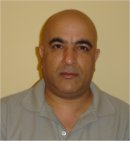Plenary
Lecture
Internet and Network-based Healthcare: Performance Analysis and Improvements

Dr. Seyed A Shahrestani
School of Computing & Mathematics
University of Western Sydney
AUSTRALIA
E-mail: S.Shahrestani@uws.edu.au
Abstract: eHealth covers the Information
and Communication Technology (ICT) related interaction between healthcare
professionals and the system clients. It can also include telemedicine
services, systems for monitoring and assisting patients and health information
networks. Health ICT industry can become the third largest industry in the
health sector with a global turnover of €50-60 billion. In particular,
telemedicine and homecare is the sector with the greatest prospective for
clinical and financial impact. To see why, it can for instance be noted that
chronic diseases are responsible for 60% of all deaths. In Europe, over 70% of
healthcare costs are spent on chronic diseases. As the risk of chronic disease
increases with age, problems will be exacerbated due to world aging
population. A clearly advantageous method of dealing with chronic diseases
relies on network-based care. It can be based on collecting metrics from
biomedical devices used by patients in their homes or other settings and using
the communication networks to transmit them to a clinical facility. There are
many other promising techniques that can benefit from network-based
healthcare. Although the advantages of these techniques are rather obvious,
they have not yet enjoyed widespread acceptance and deployments. Many studies
have been carried out to identify the reasons for that. Several of these
reasons are at least implicitly related to the underlying communication
networks and the Internet characteristics. The heterogeneous nature of the
Internet, along with its intentional lack of central control and loose
hierarchy pose many challenges for its management. In this work, a framework
for analysis and management of such complex systems is presented. In
particular, the advantages of utilizing these approaches to improve the
overall performance of Internet and network-based healthcare systems for a
wide range of operating conditions are discussed.
Brief Biography of the Speaker:
Dr Seyed Shahrestani has received his PhD in Electrical and Information
Engineering from University of Sydney. He is currently a Senior Lecturer with
the School of Computing and Math, University of Western Sydney. He has
established partnerships and collaborations with several researchers and
groups in different universities and industries. His main teaching and
research interests are in the areas of telecommunication and computer
networking, chaos analysis and management, nonlinear control theory, complex
system analysis and control, artificial intelligence, network management,
cooperative management and health ICT. He has numerous publications in these
areas and has served on the editorial board and technical committee for
several international conferences and reputable journals. He has also
delivered keynote speeches at many international conferences and industry
colloquiums.